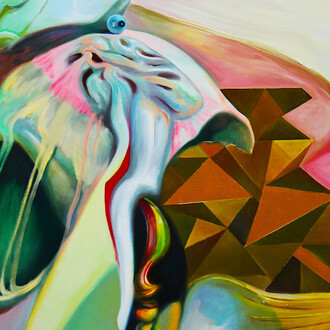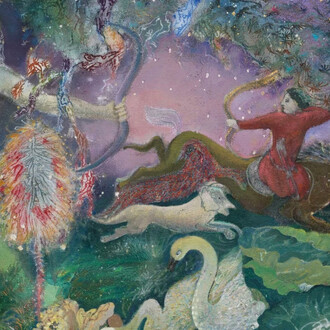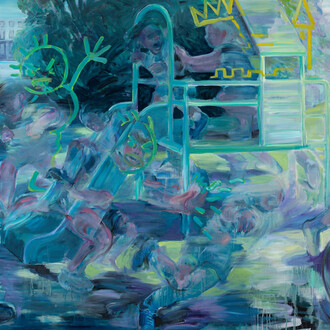Ricco/Maresca Gallery is thrilled to present Morris Hirshfield: Brooklyn tailor, the artist’s first one-person gallery exhibition in over thirty years.
Hirshfield (1872–1946) is one of the most singular figures in American art, a self-taught painter whose career bloomed late but burned brightly. A Brooklyn immigrant who rose from factory work to running a successful slipper company, he turned to painting in his mid-sixties with the same precision he once applied to tailoring and pattern design. Over that brief span, he produced an astonishing 78 paintings, each characterized by hypnotic symmetry, luxuriant surface detail, and a tactile sense of ornament that transforms textile, body, and nature into spellbinding pattern. His works—whether nudes, animals, or landscapes—possess an otherworldly clarity that led MoMA to grant him a full retrospective in 1943, an extraordinary honor for an artist who had then been painting for only a few years. Today, Hirshfield’s art is celebrated as a vital bridge between the so-called “self-taught” and the canon of modernism, his vision as fresh and startling as when it first appeared. The exhibition revives that encounter, revealing a body of work at once exacting, opulent, and indelibly alive.
When Nude at the window was painted, Morris Hirshfield stood at the intersection of an unlikely but consequential convergence of avant-garde and self-taught art. The work emerged just two years after Hirshfield's discovery by Sidney Janis, who introduced him to Alfred H. Barr Jr. at the Museum of Modern Art. Janis, a champion of untrained artists, recognized in Nude at the window a new assurance in Hirshfield's handling of the nude-a theme he had previously approached with caution. The composition's curving red-and-yellow drapes, echoing the figure's contours, and its hypnotic bisymmetry would come to define his mature style.
Its debut unfolded as Surrealism's European vanguard relocated to New York during World War II. Peggy Guggenheim's Art of this century gallery, opened in 1942, became a nexus for figures such as André Breton, Marcel Duchamp, Max Ernst, and Leonora Carrington-many, many of whom were drawn to the "marvelous" in non-academic art. Breton had a long-standing fascination with self-taught visionaries, and Duchamp's taste for the improbable aligned with Hirshfield's fusion of ornamental logic and dreamlike stasis.
That same year, Guggenheim acquired Nude at the window-the only work by a self-taught artist in her extensive personal collection—and hung it prominently in her Manhattan home alongside Braque, Picasso, and Kandinsky. This celebrated photograph captures Ernst, Duchamp, Breton, and Carrington gathered in its presence, an image that crystallized the painting's place within the Surrealist milieu.
Within this circle, Nude at the window echoed the Surrealist fascination with the female form as both icon and enigma, framed by curtains that curve protectively around her body, drawing the surrounding space into her orbit. In Janis's hands, the work became a hinge between worlds: from Hirshfield's Brooklyn home studio to the charged gatherings at Art of this century and the rarefied halls of MoMA. It remains a vivid marker of the moment when modernism's gatekeepers briefly opened the frame to admit the improbable.
















